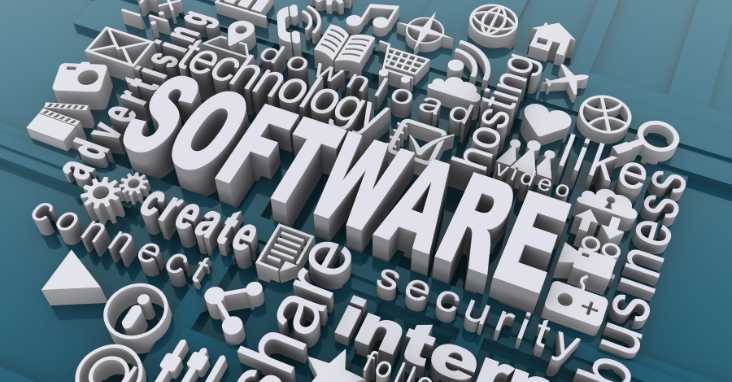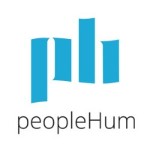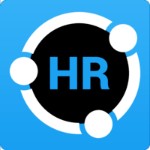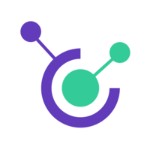If you’ve landed on this page, chances are you’re on the hunt for some solid info about Leave Management Systems (LMS). Maybe you’re a business owner, a HR manager, or just curious. Whatever your role, you’re in the right place.
Leave management might seem like just another part of the whole HR management puzzle, but it’s a biggie. It’s all about balancing employee rights to time off with the needs of your business. It sounds simple, but there’s a lot to unpack. That’s where a Leave Management System comes in.
It’s like the Swiss Army knife of managing leaves – versatile, efficient, and essential.
Now, I know what you’re thinking. “Can’t I just handle this with a spreadsheet or an email system?” Sure, you could. But let me tell you, that’s like using a flip phone in a smartphone world. A Leave Management System doesn’t just track leaves; it revolutionizes how you manage employee leave requests and you handle time off.
In this blog, we’ll dive deep into the world of Leave Management Systems. We’re talking the nitty-gritty, the perks, the challenges, and even some pro tips. By the end, you’ll be a LMS whiz, ready to transform your leave management process.

What is a Leave Management System?
A Leave Management System (LMS) is essentially a digital platform or software designed to manage and automate the process of requesting, approving, tracking, and reporting employee leaves. Think of it as a central hub that handles all aspects of leave management in a workplace.
Understanding the Basics
At its core, a LMS is all about organization and efficiency. It replaces traditional, often manual, methods of managing leave, like paper forms, emails, and spreadsheets. With a LMS, everything related to leave – be it vacation, sick leave, maternity leave, or any other type – is managed in one place.
The Evolution of Leave Management
Leave management software has evolved significantly over the years. Initially managed through paper-based systems, it moved onto spreadsheets and emails. However, these methods were prone to errors and inefficiencies. Enter LMS, which brings a high level of precision and ease to the process.
How Does a Leave Management System Work?
A typical LMS allows employees to apply for leave directly through the system. Managers can manage leave and then review and approve these requests, all within the platform. The system automatically updates leave balances and integrates this data with other HR systems like payroll.
Types of Leaves Managed by LMS
A robust LMS can handle a variety of leave types, such as annual leave, sick leave, parental leave, and more. It ensures that different leave policies, as per organizational or legal requirements, are adhered to effectively.
Who Benefits from a Leave Management System?
Everyone in the organization benefits from a LMS. Employees enjoy transparency and ease of use, managers save time and resources, and the HR department gets a reliable tool for managing leaves effectively and ensuring policy compliance.
Key Points:
- Employee Benefits: Enhanced transparency and ease in applying for leave.
- Management Advantages: Streamlined process saving time and reducing errors.
- HR Efficiency: Effective management and policy compliance.

Benefits of a Leave Management System
Implementing a Leave Management System (LMS) can transform how organizations manage employee leave and handle time-off requests. This technology is not just about tracking leaves; it’s a strategic tool that can bring substantial benefits to your organization.
Boosting Productivity and Efficiency
One of the most significant benefits of a LMS is the increase in productivity and efficiency. By automating the leave management process, it reduces the administrative burden on HR staff, allowing them to focus on more strategic tasks.
Enhancing Employee Satisfaction
A transparent and efficient leave management process is crucial for employee satisfaction. A LMS provides a user-friendly interface for employees to manage their leaves, fostering a sense of fairness and transparency in the workplace.
Ensuring Legal Compliance
Leave policies are often governed by legal requirements. A LMS helps in complying with these regulations by keeping track of all the necessary details like accruals, carryovers, and leave entitlements as per legal standards.
Streamlining HR Processes
A LMS is not an isolated tool; it often integrates with other HR systems, providing a unified approach to human resources management. This integration streamlines HR processes, making data management more cohesive and efficient.
Data-Driven Decision Making
With a LMS, organizations have access to detailed leave data, which can be used for analytics and reporting. This data-driven approach aids in making informed decisions about staffing, leave policies, and overall HR strategies.
Reducing Absenteeism and Improving Planning
By providing clear visibility into employee leave patterns, a LMS helps in managing absenteeism more effectively. It also aids in better workforce planning employee scheduling, ensuring that the organization is adequately staffed at all times.
Key Points:
- Managing Absenteeism: Helps in monitoring and reducing unplanned absences.
- Effective Workforce Planning: Assists in planning for peak times and ensuring adequate staffing.

Challenges in Leave Management
Navigating the intricacies of intuitive leave management system can be a daunting task for any organization. While a Leave Management System (LMS) offers numerous benefits, it’s also important to understand the challenges and obstacles that might arise during its implementation and ongoing management.
Navigating Legal Compliance
One of the primary challenges in leave management is ensuring compliance with various legal requirements. Laws and regulations concerning employee leave vary significantly from one region to another and can change frequently. Keeping up with these changes and ensuring that your leave policies remain compliant is a continuous task.
Understanding Legal Complexities
Legal complexities in leave management aren’t just about adhering to the basic statutory leave entitlements; they also involve understanding nuances like carry-over policies, leave accruals, and the interplay between different types of leave. For multinational companies, these complexities multiply, as they have to navigate the laws of multiple countries.
Ensuring Policy Adherence
Even with a robust LMS in place to manage leave requests, ensuring that employees and managers adhere to the set policies can be challenging. This includes making sure that leave requests are processed according to company policy and that exceptions are handled appropriately. Training and clear communication are key to ensuring adherence.
Balancing Business Needs and Employee Expectations
Striking the right balance between meeting business needs and accommodating employee expectations is another significant challenge. While it’s important to respect employees’ rights to take leave, it’s equally vital to ensure that the business operations are not adversely affected due to staff shortages.
Predicting and Managing Absenteeism
Unplanned absences can disrupt workflows and affect productivity. Predicting these and planning accordingly can be challenging. A LMS can provide data on leave trends, which can be helpful, but it still requires careful analysis and proactive management.
Communication and Clarity
Clear communication about leave policies and procedures is crucial. Employees need to understand how to apply for leave, how their leave is calculated, and what the approval process involves. Likewise, managers need to be clear on how to handle leave requests fairly and consistently.
Cultural Sensitivity and Diversity
In today’s global workforce, cultural sensitivity and accommodating diversity in leave policies are increasingly important. Different cultures have different expectations and norms regarding leave, particularly around events like national holidays, bereavement, and parental leave. Crafting policies that respect this diversity while maintaining fairness can be challenging.
Technology Integration and User Adoption
Implementing a new LMS involves integrating it with existing HR and payroll systems, which can be complex. Additionally, getting all employees to adopt and use the new system effectively requires a well-planned training and change management strategy.
Continuous Policy Review and Adaptation
Leave policies aren’t set in stone. They require regular reviews and adaptations to stay relevant with changing workforce dynamics, legal landscapes, and organizational needs. Keeping these policies up-to-date and ensuring the LMS reflects these changes is a continuous process.
Navigating these challenges requires a combination of strategic planning, continuous learning, and effective communication. Understanding these hurdles is the first step in overcoming them, ensuring that your leave management process is as efficient and compliant as possible.
Key Points:
- Balancing employee needs and business demands.
- Communication and policy transparency.

Choosing the Right Leave Management System
Selecting the appropriate Leave Management System (LMS) for your organization is a critical decision that can significantly impact your HR operations. With a myriad of options available in the market, finding the one that best aligns with your organizational needs requires careful consideration.
Assessing Your Organizational Needs
The first step in choosing the right LMS is to thoroughly understand your organization’s specific needs. This involves evaluating the size of your workforce, the complexity of your leave policies, and any unique requirements that your industry might have. For instance, a multinational corporation will have different needs compared to a small local business, both in terms of scalability and compliance with various regional laws.
User-Friendly Interface
A LMS should be intuitive and easy to use for all employees, regardless of their technical proficiency. A system with a complicated interface can lead to low adoption rates and increased resistance from staff. Look for a LMS that offers a clear, straightforward user experience, with easy-to-navigate menus and a clean design.
Customization Options
Every organization has its unique set of rules and policies when it comes to leave management. Therefore, it’s essential to choose a LMS that offers high levels of customization. This includes the ability to set custom leave types, workflows, and approval hierarchies that align with your specific organizational structure and policies.
Scalability
Consider the scalability of the LMS. As your business grows, your leave management needs will evolve. The chosen system should be able to scale up effortlessly, accommodating more users, and potentially more complex organizational structures without a drop in performance or usability.
Integration Capabilities
A critical feature of a good LMS is its ability to integrate seamlessly with other HR and payroll systems. This seamless integration ensures that data flows smoothly between systems, reducing the need for manual data entry and minimizing the risk of errors. Ensure that the LMS can integrate with your existing HR software, payroll systems, and any other relevant tools.
Support and Training
Evaluate the level of support and training provided by the LMS vendor. Comprehensive training is essential for ensuring that your staff can use the system effectively. Additionally, responsive customer support is crucial for resolving any issues that might arise during the use of the system.
Security and Data Privacy
In an age where data breaches are increasingly common, the security features of a LMS cannot be overlooked. Ensure that the system has robust security protocols to protect sensitive employee data. Compliance with data privacy laws, such as GDPR, is also a crucial factor, especially for organizations operating in or dealing with the European Union.
Cost-Effectiveness
Finally, consider the cost of the LMS. This includes not just the initial purchase price, but also any ongoing costs for maintenance, support, and upgrades. The system should be cost-effective, providing a good return on investment by saving time and resources in the long run.
Requesting Demonstrations and Trials
Before making a final decision, request demonstrations and trial periods from potential vendors. This will give you a hands-on feel for how the system works and whether it fits your organization’s needs.
Choosing the right Leave Management System is a strategic decision that requires careful evaluation of your organization’s specific needs, the system’s features, and its compatibility with your existing processes. By considering these aspects, you can select a LMS that not only streamlines your leave management process but also contributes positively to your overall organizational efficiency and employee satisfaction.

Advanced Tips for Maximizing Your LMS
Once you’ve implemented a Leave Management System in your organization, the next step is to leverage its full potential. Beyond the basic functionalities, there are several ways to enhance the effectiveness of your LMS, ensuring that it not only manages leave efficiently but also contributes to broader organizational goals.
Integrating with Other Systems
Integration is key to maximizing the value of your LMS. By ensuring your LMS communicates seamlessly with other HR systems like payroll, attendance tracking, and employee self-service portals, you create a unified and efficient, HR management software ecosystem. This integration allows for real-time data updates and minimizes errors that can occur due to manual data entry.
Utilizing API Capabilities
Many modern LMS platforms offer API (Application Programming Interface) capabilities, allowing them to integrate with a wide range of software systems. Utilize these APIs to connect your LMS with other tools used in your organization, such as project management software, HRIS (Human Resource Information Systems), work management software and more.
Exploiting Analytics and Reporting
Your LMS is a goldmine of data. Exploit its analytics and reporting capabilities to gain insights into leave trends, patterns, and anomalies. This data can inform decision-making around staffing, identify potential issues like burnout or understaffing, and help in forecasting future leave demands.
Custom Reporting
Take advantage of custom reporting features to generate reports that are tailored to your organization’s specific needs. Whether it’s detailed reports on leave usage by department, tracking the frequency of unplanned absences, or analyzing the impact of leaves on productivity, custom reports can provide valuable insights.
Automating Processes
Automation is a significant feature of any advanced LMS. Look for opportunities to automate repetitive tasks within the leave management process. This could include automatic updates to leave balances, automated notifications to managers and HR when a leave is booked or approved, and automated alerts for policy violations.
Enhancing User Experience
Continuously work on enhancing the user experience for both employees and managers. A user-friendly interface, full mobile app accessibility, and personalized dashboards can greatly increase the adoption and effective use of your LMS.
Regular Feedback Loops
Establish regular feedback loops with your users (employees and managers) to understand their experience with the LMS. Use this feedback to make continuous improvements, ensuring the system remains aligned with user needs and expectations.
Training and Ongoing Support
Invest in comprehensive training sessions for your employees and managers to ensure they are making the most of the LMS. Also, establish a support system for addressing queries and issues related to the LMS, ensuring smooth and uninterrupted usage.
Leveraging AI and Machine Learning
If your LMS supports AI and machine learning capabilities, leverage these for predictive analytics and smarter decision-making. AI can help in predicting leave trends, suggesting optimal staffing levels, and even identifying potential issues before they become problematic.
Regular Updates and Upgrades
Stay updated with the latest features and upgrades offered by your LMS provider. Regularly updating your system ensures that you are using the most efficient, secure, and feature-rich version of the software.
Maximizing your Leave Management System is about more than just managing leave; it’s about integrating the system into the broader fabric of your organization’s operations. By leveraging advanced features, focusing on integration, and continuously seeking to improve the user and employee experience throughout, you can transform your LMS into a strategic tool that contributes significantly to organizational efficiency and employee satisfaction.

FAQ
What is a Leave Management System?
A Leave Management System (LMS) is a digital platform designed to automate the process of managing employee leave requests. It simplifies applying for, approving, tracking, and reporting of various types of leaves like vacation, sick leave, maternity/paternity leave, etc. The management system software ensures that all leave policies are followed and integrates with other HR systems for comprehensive management.
How does a LMS differ from traditional methods?
Traditional leave management often involves manual processes like paper forms or spreadsheets. A LMS, on the other hand, automates and digitizes these processes, reducing manual effort, minimizing errors, and providing real-time updates. It offers greater transparency, efficiency, and data accuracy compared to traditional methods.
What are the key features of a good LMS?
Key features of a good LMS include an intuitive user interface, customization options to cater to specific organizational policies, integration capabilities with other HR systems, scalability, robust security and data privacy measures, comprehensive reporting and analytics tools, and mobile accessibility.
How does a LMS improve employee satisfaction?
A LMS improves employee satisfaction by providing a transparent and easy-to-use system for managing leaves. It ensures fair and consistent application of leave policies, offers employees autonomy in tracking their leave balances and submitting leave requests, and reduces the likelihood of disputes related to leave.
Can a LMS help with legal compliance?
Yes, a LMS can significantly assist in legal compliance. It helps in adhering to various labor laws and regulations by ensuring that leave policies align with statutory requirements. The system also keeps accurate records of all leaves, which is essential for audits and compliance checks.
How do I choose the right LMS for my company?
To choose the right LMS, assess your organizational needs, including the size of your workforce and specific leave policies. Look for a system with a user-friendly interface, customization options, scalability, and robust integration capabilities. Consider the level of customer support offered and ensure the system meets your security and data privacy standards.
How do I implement a LMS in my organization?
To implement a LMS, start with a clear plan that includes setting goals, choosing the right system, and preparing your infrastructure for integration. Conduct thorough training for all users, and roll out the system in phases to monitor and address any issues. Ongoing support and feedback loops are crucial for successful implementation.
How can I train my staff to use a LMS?
Training your staff to use a LMS involves organizing comprehensive training sessions that cover all functionalities of the system. Utilize a mix of training methods like webinars, in-person workshops, and tutorial videos. Ensure that there are resources available for ongoing support and queries.
Can a LMS integrate with other HR systems?
Yes, most modern LMS solutions offer integration capabilities with other HR systems like payroll, attendance, time tracking, and HRIS. This integration allows for a seamless flow of data across systems, enhancing the overall efficiency and accuracy of HR operations.
How does a LMS use data and analytics?
A LMS uses data and analytics to provide insights into leave patterns, trends, and employee behavior. It can generate reports on leave usage, absence rates, and compliance issues, helping management to make informed decisions. Analytics can also be used for forecasting and planning purposes, improving workforce management.

Software Tools
A robust LMS is the cornerstone of effective leave management, but its efficiency can be significantly enhanced by integrating it with other software tools. Here are some key tools that work well in conjunction with a LMS:
1. Asana – Project Management and Task Tracking
What it offers:
- Asana is a versatile project management tool that helps teams organize, track, and manage their work.
- It offers task assignments, deadlines, and progress tracking features, which can be invaluable for managing workloads and deadlines, especially when team members are on leave.
- The tool’s calendar view can be particularly useful for visualizing project timelines and understanding how employee absences might impact project delivery.
2. Slack – Team Communication and Collaboration
What it offers:
- Slack is a communication platform designed for teams. It enables real-time messaging, file sharing, and collaboration.
- Integrating Slack with your LMS can facilitate quick communication about leave approvals, changes in scheduling, and urgent updates.
- It also allows for the creation of dedicated channels for HR or leave management, providing a centralized space for discussions and queries related to leave policies.
3. Zoom – Virtual Meetings and Webinars
What it offers:
- Zoom is a popular tool for virtual meetings, webinars, and video conferencing.
- It can be particularly useful for conducting remote training sessions on how to use the LMS or for addressing any updates to leave policies.
- Zoom meetings can also be used for check-ins with staff who are on long-term leaves, ensuring they stay connected and informed.
4. Google Workspace – Integrated Office Suite
What it offers:
- Google Workspace includes a suite of cloud-based productivity tools like Gmail, Docs, Sheets, and Calendar.
- Integrating these tools with your LMS can enhance productivity. For instance, Google Calendar can display approved leave dates directly, ensuring that team members are aware of each other’s availability.
- The collaborative nature of Google Docs and Sheets can also be useful for managing leave-related documents and policies.
5. Microsoft Teams – Collaborative Workspace and Communication
What it offers:
- Microsoft Teams is a collaboration platform that combines chat, video meetings, file storage, and application integration.
- It can be integrated with your LMS to facilitate seamless communication and collaboration, especially useful for teams working remotely.
- Teams also integrates well with other Microsoft Office applications, which many organizations already use for their day-to-day operations.
6. Trello – Visual Project Management
What it offers:
- Trello is a visual tool for project management and organization using boards, lists, and cards.
- It’s particularly useful for tracking tasks and projects during periods when team members are on leave.
- Trello’s intuitive interface and visual cues help in keeping everyone on the same page regarding project status and deadlines.
Each of these tools brings its unique strengths and functionalities, and when integrated effectively with a Leave Management System, they can significantly enhance the efficiency and productivity of your team. Whether it’s through improved communication, better project management, or seamless collaboration, leveraging these tools in tandem with your LMS can lead to a more streamlined and effective management process.

Conclusion
As we’ve journeyed through the intricacies of Leave Management Systems, it’s clear that the impact of a well-implemented LMS goes far beyond mere administrative convenience. In today’s dynamic work environment, where flexibility and efficiency are paramount, a robust LMS emerges not just as a tool, but as a strategic asset.
Transforming Leave Management
The implementation of a LMS signifies a fundamental shift in how organizations manage time off. It’s a move away from tedious, error-prone manual processes to a streamlined, transparent, and equitable time off management system. This transformation fosters a more productive and harmonious workplace, where employees feel valued and managers can make informed decisions.
Strategic Value in HR Operations
A LMS isn’t just about tracking leave; it’s a cornerstone in the broader landscape of HR operations. By integrating with other HR systems, it provides a holistic view of workforce management, aids in compliance and policy adherence, and ensures that HR strategies are aligned with organizational goals. It’s a pivotal tool in the strategic toolkit of HR professionals.
Enhancing Organizational Culture
The transparency and fairness afforded by a LMS play a critical role in shaping organizational culture. When employees have clear, accessible information about their leave rights and a straightforward process for requests, it builds trust and satisfaction. This positive culture, in turn, contributes to employee retention and overall organizational success.
Looking Ahead: The Future of Leave Management
As we look to the future, the role of technology in HR, particularly in leave management, is poised to become even more significant. With advancements in AI, machine learning, and integration capabilities, LMS systems will continue to evolve, offering even more sophisticated tools for managing the diverse needs of a modern workforce.
Final Takeaways
- A Leave Management System is much more than a tool for tracking time off; it’s a catalyst for efficiency, compliance, and employee satisfaction.
- The strategic integration of a LMS within HR operations enhances overall organizational effectiveness.
- Embracing a robust LMS is an investment in your organizational culture and future readiness.















